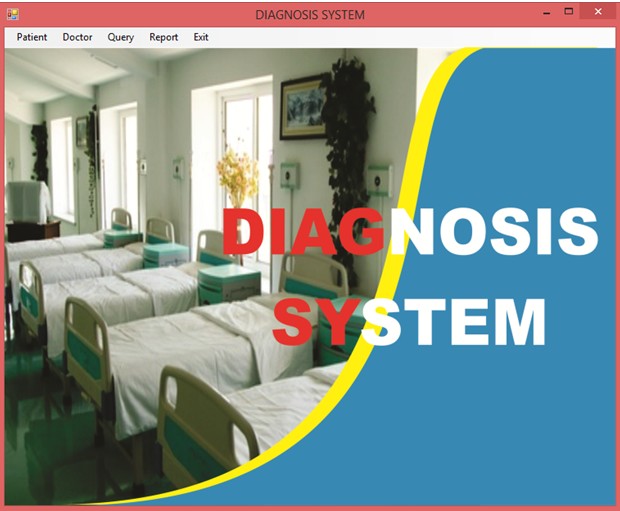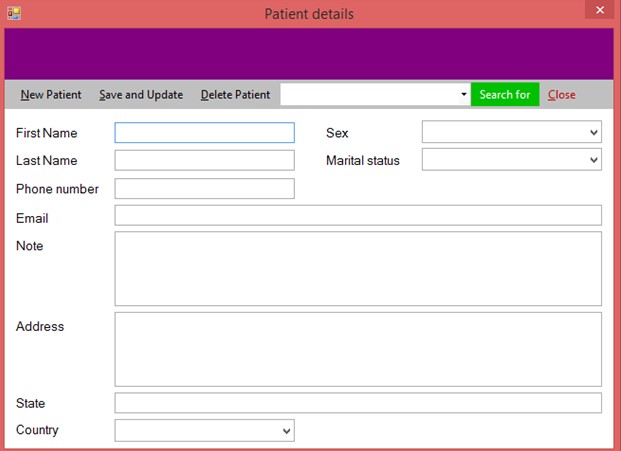DESIGN AND IMPLEMENTATION OF A COMPUTERIZED EXPERT DIAGNOSIS SYSTEM
ABSTRACT
Diagnosis system deals with the registration of patient information, doctor’s information aand report, collection of diseases and infected syndrome, and diagnosis of these diseases.Computerized system poses high speed of processing precision, storage, its versatility and high retrieval system makes possible the completion of tasks that could never been achieved with manual system because of the difficulty of completing them on time for the results to be useful.
This paper discusses the design and implementation of a diagnosis systemsystem database application with WAMP SERVER database. It also discusses the issues of selecting appropriate database model, interface design, and system deployment. A projection of record growth in relation to student population and system requirement was carried out in the study. Finally it discusses the applicability of the system in academic institutions. The Programming language used in developing this application is Visual Basic.net 2012. It runs in Windows 98 to Latest windows 8. Also Crystal report must be installed to view the report of the patient diagnosis information.
CHAPTER ONE
INTRODUCTION:
This chapter gives an overview about the aim, objectives, background and operation environment of the system.
1.1 BACKGROUND OF THE STUDY
Health care facility should be accessible by all at all times. But some of the people that should access these facilities are far removed from these facilities. More so, in the few available facilities, qualified medical personnel are always key issues that need urgent redress.
In view of the foregoing, it would be of great necessity to provide a computerized system that will provide a complementary medical service, such as medical disease diagnosis in places where accessibility is a problem as well as health care facilities where qualified experts are lacking, hence this topic, Expert System or electronic diagnosis system on some medical illness and disease.
1.2 STATEMENT OF THE PROBLEMS
Disease diagnosis and treatment constitute the major work of physicians. Some of the time, diagnosis is wrongly done leading to error in drug prescription and further complications in the patient’s health. It has also been noticed that much time is spent in physical examination and interview of patients before treatment commences. The clinical decision support system (CDSS) shall address these problems by effectively providing quality diagnosis in real-time
1.3 OBJECTIVE OF THE STUDY
The major objective of this work is to develop an expert system on diagnosis of non-communicable diseases.
It also targets towards contributing to academic research work.
• To develop modern interactive diagnostic software that will aid clinicians in diagnostic procedures.
• To offer prescription of medication.
• To enable flexibility in access to information through the World Wide Web or comprehensive knowledge bases.
• It is also to ascertain whether the diseases could be diagnosed based on signs and symptoms.
• It will also examine a patient based on simple clinical signs, and to improve family and community health
SCREEN SHOTS OF THE APPLICATION



1.6 SIGNIFICANCE OF THE STUDY
If this prototype is fully developed will be very useful in many areas such as:
a. It will help to retain the skill of an expert medical doctor in case of any eventuality;
b. It can support academic development;
c. It can be useful in many hospitals, both private and government, cases where the expert is not on seat;
d. It can also be used in the laboratory for quick research work.
1.7 LIMITATION OF THE STUDY
- Unavailability of academic materials.
- Transport problem
- Lack of financial support
- Lack of Time
- Unavailability of programming software such as Visual Basic.Net.
1.9 SCOPE OF THE STUDY
The scope of this work will include the following
1. A dynamic database system that can act as knowledge based system
2. A complete model of an expert system to portray sample troubleshooter
3. Explore the power of visual basic in data handling
4. To implement a dynamic search system
1.8 ASSUMPTION OF THE STUDY
During the process of data collection, information relating to Electronic diagnosisSystem was obtained from the internet and the library. Hence, it is assumed that all the data collected are correct and contains no false information.
1.9 DEFINITION OF TERMS
- Management: It is the co-ordination of all the resources of an Organization through the process of planning, Organization, directing and controlling
- System:Physical component of a computer that is used to perform certain task.
- Data: Numbers, Text or image which is in the form suitable forStorage in or processing by a computer, or incompleteinformation.
- Information: A meaning full material derived from computer data by organizing it and interpreting it in a specified way.
- Input: Data entered into a computer for storage or processing.
- Output: Information produced from a computer after processing.
- Information System: A set of interrelated components that collect (or retrieve), process, store and distribute information to support decision making and control in an organization.
- COMPUTER:-Computer is an electronic device that accepts data as Input, processes data and gives out information as output to the user.
- SOFWARE:-Software is set of related programs that are designed by the manufacturer to control the hardware and to enable the computer perform a given task.
- HARDWARE:- Hardware is a physical part of a computer that can be touched, seen, feel which are been control by the software to perform a given task.
- DATABASE:- Database is the collection of related data in an organized form.
- PROGRAMMING:- programmingisa set of coded instruction which the computers understands and obey.
- TECHNOLOGY:-Technology is the branch of knowledge that deals with the creation and use technical and their interrelation with life, society and the environment, drawing upon such as industrial art, engineering, applied science and pure science.
- Algorithm : A set of logic rules determined during the design phase of a data matching application. The ‘blueprint’ used to turn logic rules into computer instructions that detail what step to perform in what order.
- Application: The final combination of software and hardware which performs the data matching.
- Diagnose: The identifying of an illness or disorder in a patient through physical examination, medical tests, or other procedures
- Medical: Relating to medicine, physical examination to determine health: a physical examination by a doctor to check
- Communicable: A communicable disease that can be passed from one person
- Expert: somebody with a great deal of knowledge, skill, training, or experience in a particular field or activity - a medical expert
- Knowledge-based: Information system that store wealth of ones knowledge
- Symptoms: Signs of an ill health